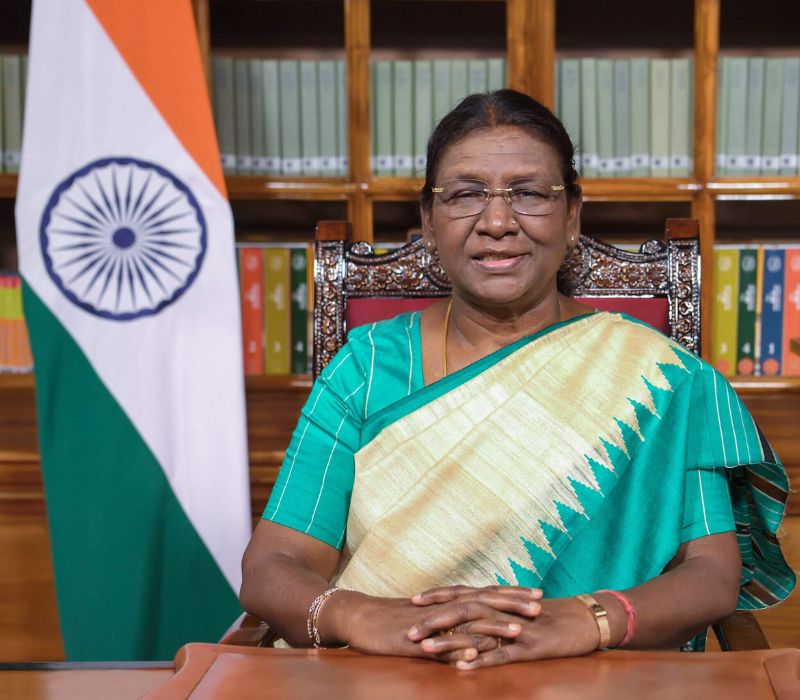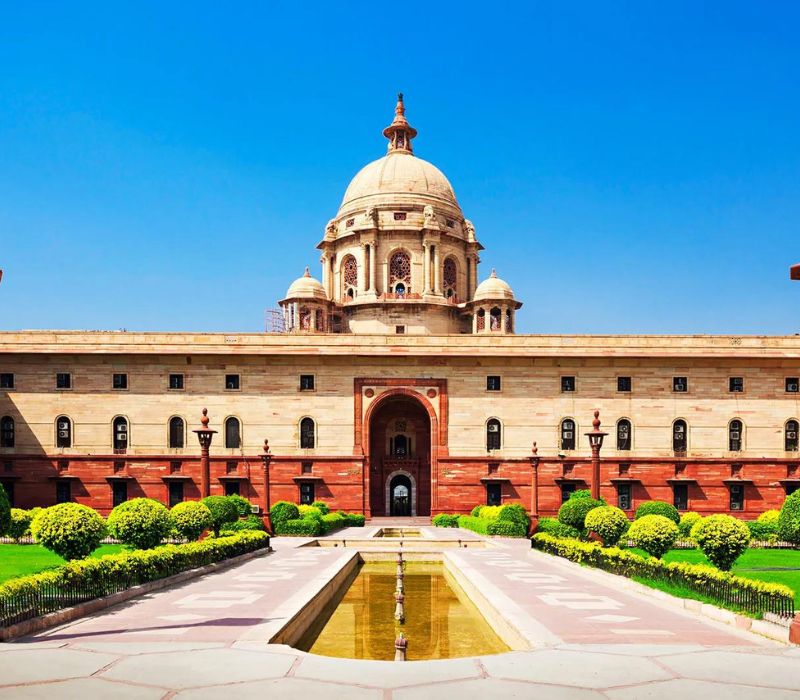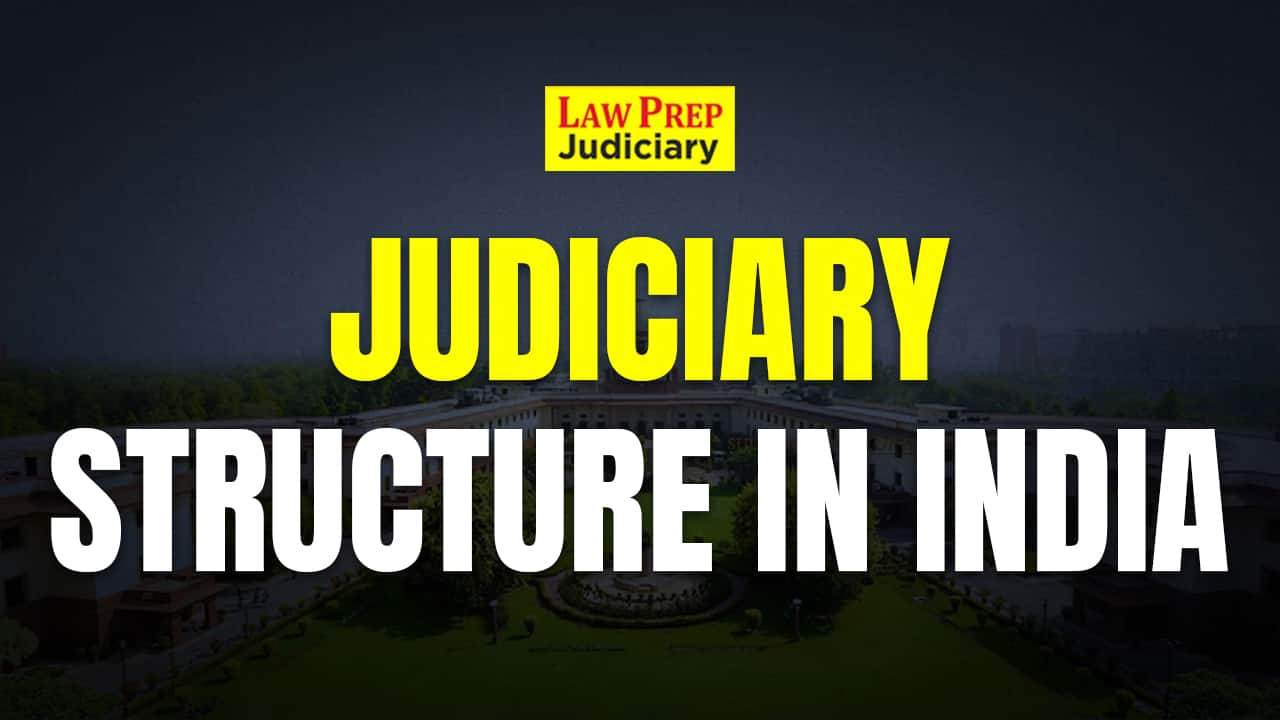The President of India is the head of state and the first citizen of the country. It plays a crucial role in the country’s democracy. Understanding how a president is elected in India is important for every citizen.
Here, we have explained the process of president election, including eligibility criteria, the Electoral College, the voting method, and more.
Let’s learn how the president is elected in India and why this process is crucial for maintaining the democratic fabric of the nation.

Eligibility Criteria to Become President of India
To become the President of India, a candidate must meet certain eligibility criteria. These are set by the Constitution of India to ensure that the President is a suitable and capable leader.
Citizenship: The candidate must be a citizen of India.
Age: The candidate must be at least 35 years old.
Other Conditions:
- The candidate must be qualified to be a member of the Lok Sabha, which is the lower house of Parliament.
- The candidate must not hold any office of profit under the Government of India, any state government, or any local or other authority. This means they should not have a job or position that gives them financial gain from the government.
These rules make sure that the President of India is a mature, experienced, and unbiased individual who can serve the nation with integrity.
How is The President of India Elected?
In the presidential election process, there is an electoral college involved which elects the president. This electoral college consists of elected members of parliament (MPs), elected members of Vidhan Sabha (State Legislative Assemblies) of all states, and the elected members of legislative assemblies (MLAs) of union territories.
So, the President of India is not elected directly by the people, but by several ministers who are part of the electoral college comprising members of Lok Sabha, Rajya Sabha, and Vidhan Sabha. The election process goes through a secret ballot procedure.
1. Nomination for President of India
For the successful nomination of the candidate in the election, he needs to have 50 electors as proposers and another 50 electors and seconders.
After the nomination, the candidate needs to deposit INR 15,000 in the Reserve Bank of India as a security amount. If a candidate doesn’t receive at least one-sixth of the total votes polled, then the security amount is forfeited.
2. Voting for President
Once the nomination is done and the security amount has been deposited, the election is done using the single transferable vote (STV) method. A secret ballot system is used for voting, where not all electors cast equal votes. This is a different strategy for voting.
3. Counting of Votes
The election process for president of India follows a principle that says that the number of votes cast by the State Legislators will be equal to the number of votes cast by Parliament members.
Furthermore, the legislators who belong to bigger states have the right to cast more votes compared to those from small states. Lastly, the principle also states that if a state has a lesser number of legislators, then they can cast more votes. If a state has more legislators, it can cast fewer votes.
4. Result
The winner of the election is the one who finds a higher number of votes than a certain quota. It is different from the usual processes where the candidate with the highest number of votes is the winner.
5. Oath
Once the result has been declared for the winner of the presidential election, the final step is the oath or affirmation. It is taken in the presence of the Chief Justice of India, before taking on his role as the President of India.
Must Read:
- Anti-Defection Law in India
- Uniform Civil Code in India
- Constitution Day of India
- Indian Female Lawyers
Electoral College
The President of India is elected by an Electoral College. This system ensures a fair and representative election process. Here’s how it works:
Composition of the Electoral College
The Electoral College consists of:
- Members of Parliament (MPs): Elected members of both the Lok Sabha (House of the People) and the Rajya Sabha (Council of States).
- Members of Legislative Assemblies (MLAs): Elected members of the Legislative Assemblies of all states and Union territories (with legislatures).
Weightage of Votes
The votes of MPs and MLAs are not counted equally. Instead, they have different weightages to balance the representation between states and the Union.
Value of MLA’s Vote:
The value of an MLA’s vote varies from state to state. It is calculated based on the population of the state and the number of MLAs. The formula is:
For example, if a state has a large population but fewer MLAs, each MLA’s vote will have a higher value.
Value of MP’s Vote:
- The total value of all MLAs’ votes from all states is added together.
- This total value is then divided by the number of elected MPs (both Lok Sabha and Rajya Sabha) to get the value of each MP’s vote.
Example Calculation:
Let’s say the total value of all MLA votes in India is 549,474 and there are 776 MPs. The value of each MP’s vote would be:
This system ensures that the election of the President reflects the federal structure of India and the democratic principles of both Parliament and state legislatures.
Indian President Nomination Process
The nomination process for the President election in India is a crucial step. It ensures that only serious and eligible candidates contest the election.
Procedure for Nomination
Nomination Paper:
- A candidate must submit a nomination paper to the Returning Officer.
- The nomination paper should include the candidate’s name and other necessary details.
Proposers and Seconders:
- The nomination paper must be signed by at least 50 proposers and 50 seconders.
- Proposers and seconders must be members of the Electoral College (MPs and MLAs).
- This rule ensures that the candidate has significant support from the members of the Electoral College.
Security Deposit
The candidate must make a security deposit of ₹15,000.
This deposit is forfeited if the candidate fails to secure a certain number of votes.
Withdrawal of Candidature
Withdrawal Period: Candidates have a specific period during which they can withdraw their candidature. This period is usually specified in the election notification.
Submitting Withdrawal: A candidate who wishes to withdraw must submit a notice in writing to the Returning Officer. The notice must be signed by the candidate.
Final List of Candidates: After the withdrawal period ends, the Returning Officer publishes the final list of candidates. Only these candidates will be on the ballot for the Presidential election.
President of India Voting Process
The voting process for the Presidential election in India is designed to be fair and representative. Here’s how it works:
Method of Voting
Secret Ballot: Voting is conducted by secret ballot to ensure confidentiality and prevent undue influence.
Polling Stations: Voting takes place at designated polling stations, usually in the premises of Parliament and state legislative assemblies.
Proportional Representation
Single Transferable Vote:
The election uses a proportional representation system by means of a single transferable vote. This means each voter (MP or MLA) ranks the candidates in order of preference.
Preference Voting: Voters mark their first preference by placing the number “1” next to their chosen candidate’s name. They can then mark their second, third, and subsequent preferences with “2”, “3”, and so on.
Calculation of Votes
Value of Votes: As previously explained, each MP and MLA’s vote has a different value. The value of each MLA’s vote is based on the population of their state, while the value of each MP’s vote is calculated to ensure balanced representation.
Counting First Preferences: Initially, only the first preference votes are counted. Each candidate’s total votes are calculated by adding up the values of all first preference votes they receive.
Quota for Winning: A candidate must secure more than 50% of the total value of valid votes to win.
The required quota is calculated using the formula:
Transfer of Votes: If no candidate reaches the quota on the first count, the candidate with the fewest votes is eliminated. The votes of the eliminated candidate are then transferred to the remaining candidates based on the next preferences marked on each ballot.
This process continues in rounds, with the candidate receiving the lowest number of votes being eliminated and their votes redistributed, until one candidate achieves the required quota.
Example Calculation
- Suppose the total value of valid votes polled is 1,000,000.
- The quota would be:
So, a candidate needs more than 500,000 to win.
Counting of Votes for Indian President Election
The counting of votes in the Presidential election in India is a meticulous process designed to ensure accuracy and fairness. Here’s how it works:
Procedure for Counting
Sealed Ballot Boxes: After voting, the sealed ballot boxes are transported to the counting center.
Opening Ballot Boxes: The ballot boxes are opened in the presence of the Returning Officer and representatives of the candidates.
Counting First Preferences: The counting begins with the first preference votes. Each ballot paper is examined, and the first preference votes are counted and recorded.
Quota for Winning
A candidate needs to secure more than 50% of the total value of valid votes to win.
Recent Trends In President Election Process
Increased Political Consensus:
Recent elections have seen a trend towards greater political consensus. For instance, the election of Ram Nath Kovind in 2017 and Droupadi Murmu in 2022 witnessed significant support from a broad coalition of parties, reflecting a move towards unified decision-making.
Focus on Diversity and Inclusion:
There has been a notable emphasis on electing Presidents from diverse backgrounds. Pratibha Patil became the first woman President in 2007, and Ram Nath Kovind was the second President from the Dalit community. In 2022, Droupadi Murmu became the first tribal woman to hold the office.
This trend highlights the growing importance of representation and inclusion in Indian politics.
Active Participation of Regional Parties:
Regional parties have played a more active role in Presidential elections, reflecting their increasing influence in national politics.
The support of regional parties has become crucial in ensuring a candidate’s victory, as seen in the elections of recent Presidents.
Use of Technology:
The election process has increasingly incorporated technology for better management and transparency.
Electronic counting and the use of secure communication channels have made the process more efficient and reliable.
FAQs About President of India
The President of India is elected by an Electoral College consisting of elected Members of Parliament (MPs) and elected Members of Legislative Assemblies (MLAs) from the states and Union territories. The election uses a proportional representation system with a single transferable vote.
The President of India serves a term of five years but can be re-elected for additional terms.
Yes, the President of India can be impeached for violation of the Constitution. The process requires a two-thirds majority in both houses of Parliament.
The Vice President of India serves as the ex-officio Chairman of the Rajya Sabha (Council of States). In the event of the President’s death, resignation, removal, or incapacity, the Vice President acts as the President until a new President is elected.
Yes, Pratibha Patil was the first woman to be elected as the President of India. She served from 2007 to 2012.
As of 2024, India has had 15 Presidents since independence. The current President is Droupadi Murmu, who took office in 2022.
The President of India can declare a state of emergency based on the advice of the Cabinet. There are three types of emergencies: National Emergency, President’s Rule (State Emergency), and Financial Emergency. Each type has specific conditions and procedures.
Yes, the President of India can be impeached for violation of the Constitution. The process requires a two-thirds majority in both houses of Parliament.
As of 2024, India has had 15 Presidents since independence in 1947.
Only one President of India, Neelam Sanjiva Reddy, was elected unopposed in 1977.
Yes, the President of India can be re-elected for additional terms.
Dr. Rajendra Prasad, the first President of India, was the only President to be elected twice, serving from 1950 to 1962.
Neelam Sanjiva Reddy was elected unopposed in 1977.
Yes, the President of India can dissolve the Lok Sabha (House of the People) on the advice of the Prime Minister.
The current President of India is Droupadi Murmu.
Dr. Shankar Dayal Sharma served as the 9th President of India from 1992 to 1997.
The President of India performs several duties, including:
– Representing the country as the head of state
– Appointing key officials such as the Prime Minister and judges
– Summoning and proroguing Parliament
– Giving assent to bills passed by Parliament
– Declaring a state of emergency when necessary
Pranab Mukherjee was the President of India before Ram Nath Kovind, serving from 2012 to 2017.
R. Venkataraman served as the 8th President of India from 1987 to 1992.
The next President of India will be elected by the Electoral College when the current President’s term ends or in the event of a vacancy. As of now, it is not known who will be the next President.
The President of India is elected by an Electoral College consisting of elected Members of Parliament (MPs) and elected Members of Legislative Assemblies (MLAs) from the states and Union territories.
The official residence of the President of India is Rashtrapati Bhavan, located in New Delhi.
—




